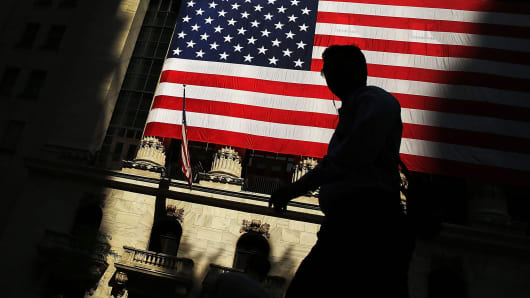Does the stock market perform better under a Democrat or Republican president? The answer might not be as simple as you'd think.
For years, researchers have found that a Democrat in the White House is correlated with strong excess market returns over the past century. A new paper questions that belief, and suggests that previous results in the literature were the result of reporting bias, data mining and selection bias. Those are serious allegations in the impartial world of academic research.
The most recent evidence showing a correlation between a Democratic president and strong market returns was from earlier this year, when a working paper from two University of Chicago researchers was put out by the National Bureau of Economic Research. Lubos Pastor and Pietro Veronesi's research — which expanded upon a 2003 paper — found that in the period 1927 through 2015, the stock market saw average excess returns of 10.7 percent under Democratic presidents and negative 0.2 percent under Republicans.
Pastor and Veronesi explain that nearly 11 percent difference — the so-called "presidential puzzle" — with a model for time-varying risk aversion through occupational choices and presidential elections. When risk aversion is high, like during economic crises, voters flock to Democratic candidates, they argue. When risk aversion is low, during boom times, voters select the Republican candidate.
Not so fast, say researchers at Research Affiliates, a quantitative and "smart beta" fund manager run by Rob Arnott. The new paper argues that previous studies — including Pastor and Veronesi's — on stock markets under different parties overstate returns under Democratic presidents because of two unique occasions that throw off the average.



